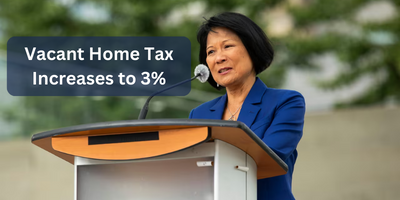Understanding Canada’s Tax-Free First Home Savings Account (FHSA)
One recent development that’s sparked considerable interest among first-time homebuyers is the Tax-Free First Home Savings Account (FHSA). Implemented on April 1, 2023, the FHSA is a tool to allow first-time homebuyers to save for the purchase of their first home. This article aims to demystify the FHSA and provide a comprehensive understanding of its potential benefits and implications for first-time homebuyers in Ontario.
Introduction to the First Home Savings Account (FHSA)
The FHSA, introduced by the Canadian government, is a tax-free savings account designed specifically to assist first-time homebuyers in their quest to own a home. It functions similarly to an RRSP or a TFSA, but with unique benefits and stipulations catered toward first-time homeowners.
Essential Benefits of the Tax-Free First Home Savings Account (FHSA
The FHSA offers significant tax advantages for those saving to buy their first home. Contributions made to the FHSA are tax-deductible, meaning that they can reduce your taxable income in the contribution year. Furthermore, any income or capital gains generated within the FHSA are tax-free, even when withdrawn to purchase a home. Therefore, it has the combined benefits of a Registered Retirement Savings Plan (RRSP) and a Tax-Free Savings Account (TFSA).
Guidelines for FHSA Contributions and Deductions
When contributing to a First Home Savings Account (FHSA), it’s important to understand how these contributions and their corresponding tax deductions work.
Contribution to First Home Savings Account
This new registered plan allows first-time homebuyers to contribute up to $8,000 per year and up to a $40,000 lifetime contribution limit.
Deductions to First Home Savings Account
Here’s a simplified breakdown:
- Contribution Deductions: Similar to Registered Retirement Savings Plan (RRSP) contributions, the amounts you contribute to your FHSA can be deducted from your income when filing your tax return. This can be done either in the year of the contribution or any subsequent year.
- Maximum Deductible Amount: The amount you’re allowed to deduct in relation to your FHSA contributions isn’t unlimited. It’s calculated based on the following:
Begin with the total of all your annual FHSA limits for the current year and each previous year. Subtract the total of all your past FHSA deductions from this number. If this result exceeds $40,000, your maximum deduction limit will be $40,000, not the higher amount. - Considerations for Transfers: If you’ve transferred any amount from your RRSPs to your FHSAs in the current or any previous year, this amount should also be subtracted from your calculated maximum deductible amount.
- Negative Calculations: If these calculations result in a negative number, use $0 as the maximum deduction limit.
- Carry-Forward Mechanism: If for any reason, you’re unable to claim or choose not to claim some or all of your eligible contributions as an FHSA deduction in a given year, you can carry forward the unused amount. This means you can claim these unused FHSA contributions as a deduction in a future tax year.
We advise that you speak to your accountant or financial planner to assess how these deductions apply to your unique circumstances.
Opening and Closing a First Home Saver Account (FHSA)
Eligibility
In order to open a FHSA, one must qualify based on several specific criteria. In Ontario, a qualifying individual must be at least 18 years old, but not older than 71 by the end of the year. They must also be a resident of Canada, and be purchasing their first home.
If an individual’s residency status changes to non-resident after the FHSA has been opened, special rules will apply. For more detailed information regarding non-residents and FHSAs, it is recommended to consult official documentation or seek professional advice.
Types of FHSAs
Three types of FHSAs can be offered, providing flexibility for the account holder. These include:
- A Depositary FHSA: This type of account, held with a financial institution, accommodates money, term deposits, or Guaranteed Investment Certificates (GICs).
- A Trusteed FHSA: As a trust with a trust company serving as the trustee, this account type holds qualified investments such as money, term deposits, GICs, government and corporate bonds, mutual funds, and securities listed on a designated stock exchange.
- An Insured FHSA: This is essentially an annuity contract with a licensed annuity provider.
Banks, insurance companies, credit unions, and trust companies can serve as FHSA issuers offering these accounts.
Closure of a FHSA
An FHSA can be active until the earlier of the following: 15 years after the account’s opening, the year the owner turns 71, or a year after the first qualifying withdrawal. At the end of this maximum participation period, any remaining assets can typically be transferred into your RRSP or RRIF, tax-deferred.
However, if a taxable withdrawal is made, it should be declared as income on your tax return for the year it is received. Similarly, if the FHSA is deemed inactive, the fair market value of all property as of the end of that year should be declared as income. In the event of the death of the last FHSA holder, the account must be closed by the end of the exempt period.
Implications of Becoming a Non-Resident After Opening a FHSA
Becoming a non-resident of Canada after opening your FHSA doesn’t prevent you from participating in your account as usual, but it does restrict the conditions under which you can make a qualifying withdrawal. While non-resident, you are not allowed to make a qualifying withdrawal for building or buying a qualifying home. This is due to the requirement that a person must remain a resident of Canada throughout the period starting with the first qualifying withdrawal and ending with the acquisition of the qualifying home.
Additionally, any taxable withdrawal from your FHSA while you’re a non-resident of Canada will be subject to a 25% withholding tax in the year of withdrawal, unless reduced by a treaty. It is important to consider these tax implications if you’re planning on changing your resident status. We advise that you speak with your accountant or financial advisor for more information on this.
Contrasting FHSA and the Home Buyer’s Plan (HBP)
The FHSA and Home Buyer’s Plan both facilitate the purchase of a first home, yet they showcase unique features and varying benefits.
Eligibility and Contribution
While both plans are primarily intended for first-time home buyers, the FHSA restricts the account opening age between 18 and 71 years. On the other hand, the HBP doesn’t impose age limits for participation, provided you have a Registered Retirement Savings Plan (RRSP) from which you can withdraw funds.
The FHSA allows non-residents to continue participation in the account but restricts qualifying withdrawals for home purchases during their non-residency. Conversely, the HBP necessitates that you must be a Canadian resident from the time of withdrawal up to when a qualifying home is bought or built.
Types of Investments and Withdrawals
The FHSA enables various types of investments like money, term deposits, government and corporate bonds, mutual funds, and listed securities, offering diverse ways to grow your savings. However, the HBP solely involves withdrawing from your RRSPs.
The HBP also stipulates that any withdrawn amount must be repaid within a 15-year period, while the FHSA operates on a maximum participation period, limiting when qualifying withdrawals can be made.
Using both the First Home Savings Account and Home Buyer Plan simultaneously
Since April 1, 2023, individuals can make use of both the HBP and FHSA simultaneously, meaning one can withdraw from RRSPs under the HBP and make a qualifying withdrawal from their FHSA for the same home purchase, adhering to each plan’s unique conditions.
In essence, the FHSA and HBP differ mainly in terms of participant eligibility, investment possibilities, withdrawal conditions, and the interaction between both schemes. Both plans serve as viable paths toward homeownership and can be leveraged differently based on individual circumstances and financial goals.
Transferring Funds from RRSP to FHSA
Strategically reallocating assets from Registered Retirement Savings Plans (RRSPs) to First Home Savers Accounts (FHSAs) offers a tax-efficient way to save for a first home. While these direct transfers are generally tax-free if, within your available FHSA limit, they are not deductible like regular FHSA contributions. The process involves submitting Form RC720 to your financial institution. However, over-contributions or transfers could lead to an excess FHSA amount. Similarly, transfers won’t restore your RRSP deduction limit. Special rules apply if you have RRSP excess contributions at the time of the transfer.
We advise that you speak to your accountant or financial planner to assess how these deductions apply in your unique circumstances.
Conclusion
As a law firm, our job is not only to assist clients in navigating the legal complexities of a home purchase but also to ensure they’re aware of various government incentives such as the FHSA. It’s always recommended to consult with your accountant and financial advisor, who can provide personalized guidance based on your specific situation and keep you updated on the most recent government incentives.
Remember, buying a home is one of the most significant financial decisions you’ll make. Equipping yourself with the right knowledge and leveraging beneficial programs such as the FHSA will empower you to make informed decisions and set you on a smooth path to homeownership in Ontario.





